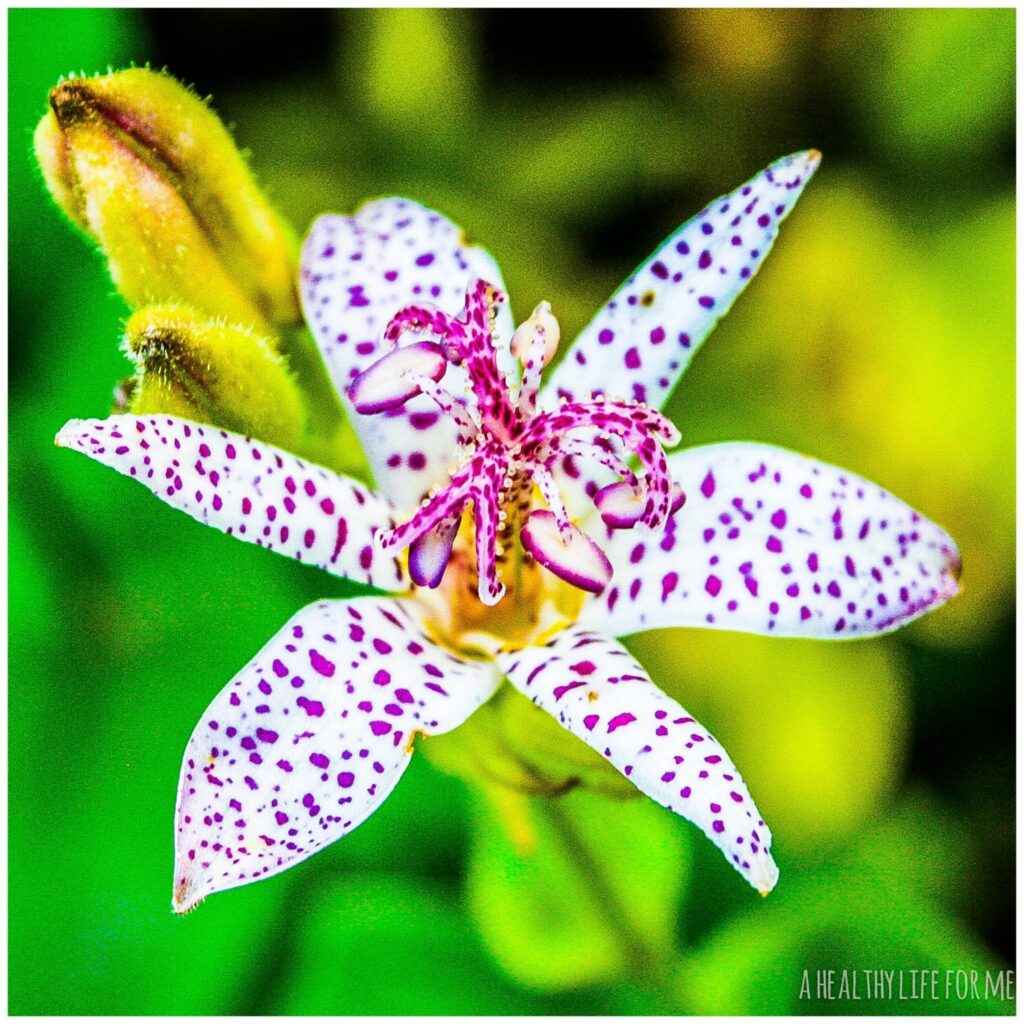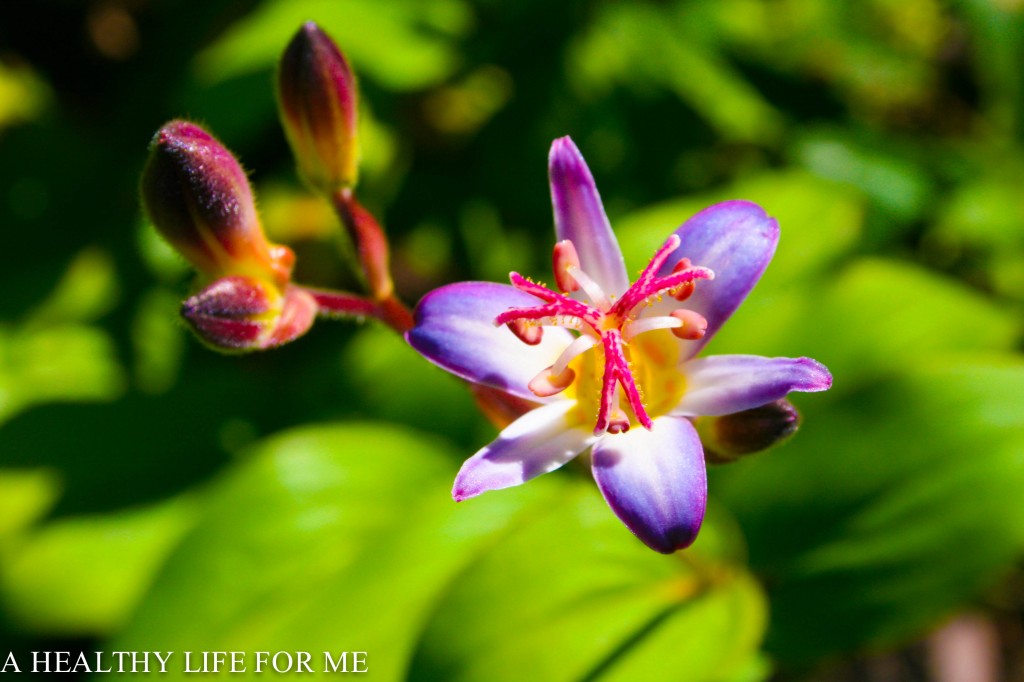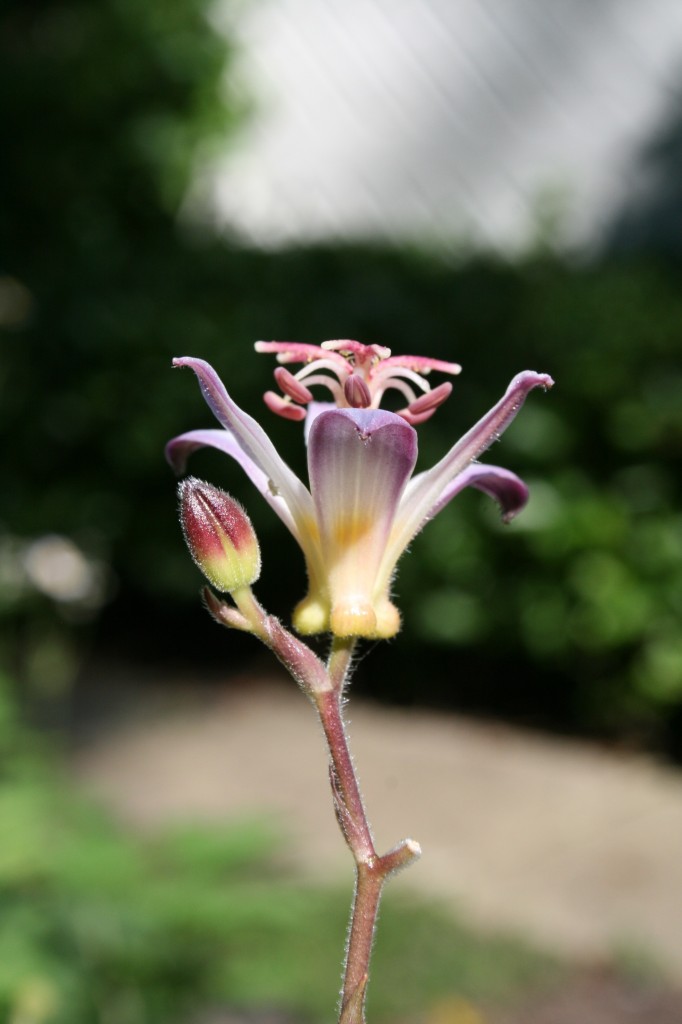Learn more about how and why you want to grow the beautiful perennial Toad Lily – Tricyrtis.
Subscribe to my blog | Follow me on Bloglovin | Instagram | Pinterest | Twitter | Facebook
The common name of Tricyrtis, Toad Lily is not pretty, but the flowers are breathtaking. These flowers got their common name, Toad Lily assigned to them because of the spots that cover their blooms, resembling the spots on a toad.
Someone had an odd sense of humor, because when most people imagine a toad it is not an image of beauty, but when you think of the Toad Lily, images of beauty follow.
Toad Lily is a true fall stunner and essential for your part sun-to-shade garden. I can’t emphasize enough to you that you really must grow these.
You may believe that these are too-good-to-be-true when you look at the photos because the blooms resemble exquisite orchid like flowers. They also hold on to their blooms for a very long period of time and are blooming when little else is. Right now in my garden the only blooms are coming from my Asters, Japanese Anemone and the Toad Lily.
Not only are these blooms as beautiful in person as they are in the picture, but they are effortless to grow if you plant them in the right conditions. Because these perennials are from moist woodlands and high elevations of eastern Asia to the Philippines, they do best in light shade in humus-rich soil that retains moisture. They don’t like wet feet and will experience rot in standing water.
They make subtle, but exotic, specimens for woodland borders and are suitable for informal and formal parts of the garden and among shrubs gradually becoming large clumps. Some self-seed but not aggressively. Varieties can grow to 1-3 feet tall and 1-2 feet wide.
Toad lilies fill in an important gap in the shade garden, blooming when most other flowering plants are finished flowering. You can pair these plants with shade-loving foliage plants, like hostas and ferns; with annuals, like impatient and coleus; or with flowering perennials, like Japanese Anemone, and Phlox. Be sure to plant them towards the front of a deep border, where you can admire the profuse but tiny flowers. Because of the blooms petite size, you will want to get up close to admire them.
However, in spite of their petite size, toad lily blossoms are an important source of nectar for wildlife. They attract butterflies, and hummingbirds that appreciate this late summer source of energy as they prepare to migrate south.
Remove the spent flower stems once the toad lilies are done flowering. Break the stem off at the base and discard. Cut out any dead or damaged foliage with clean shears to keep the plants looking their best.
Light
Part Sun,Shade
Zones:
4-9
Plant Type:
Perennial
Plant Height:
1-3 feet tall, depending on variety
Plant Width:
1-2 feet wide, depending on variety
Flower Color:
White, mauve, yellow flowers, depending on variety; variegated leaves, depending on variety
Bloom Time:
Blooms late summer through to late fall, depending on variety
Landscape Uses:
Containers,Beds & Borders
Special Features:
Attractive Foliage,Fall Color,Cut Flowers,Drought Tolerant,Tolerates Wet Soil,Deer Resistant,Easy to Grow
Plant sources:














Will a root form in water?
I do not know, give it a shot. I would love to know the results.